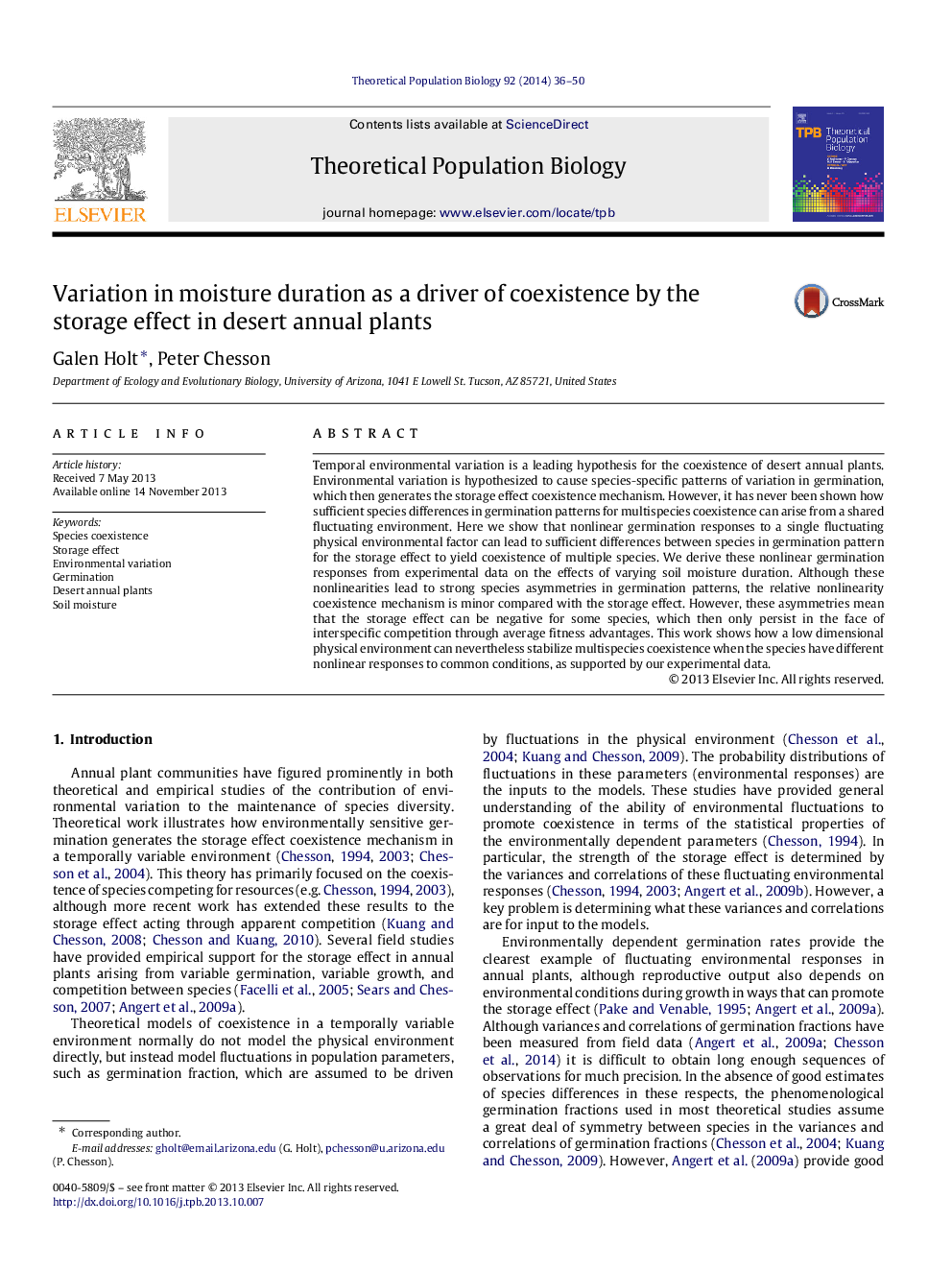| Article ID | Journal | Published Year | Pages | File Type |
|---|---|---|---|---|
| 6372376 | Theoretical Population Biology | 2014 | 15 Pages |
Abstract
Temporal environmental variation is a leading hypothesis for the coexistence of desert annual plants. Environmental variation is hypothesized to cause species-specific patterns of variation in germination, which then generates the storage effect coexistence mechanism. However, it has never been shown how sufficient species differences in germination patterns for multispecies coexistence can arise from a shared fluctuating environment. Here we show that nonlinear germination responses to a single fluctuating physical environmental factor can lead to sufficient differences between species in germination pattern for the storage effect to yield coexistence of multiple species. We derive these nonlinear germination responses from experimental data on the effects of varying soil moisture duration. Although these nonlinearities lead to strong species asymmetries in germination patterns, the relative nonlinearity coexistence mechanism is minor compared with the storage effect. However, these asymmetries mean that the storage effect can be negative for some species, which then only persist in the face of interspecific competition through average fitness advantages. This work shows how a low dimensional physical environment can nevertheless stabilize multispecies coexistence when the species have different nonlinear responses to common conditions, as supported by our experimental data.
Related Topics
Life Sciences
Agricultural and Biological Sciences
Agricultural and Biological Sciences (General)
Authors
Galen Holt, Peter Chesson,
